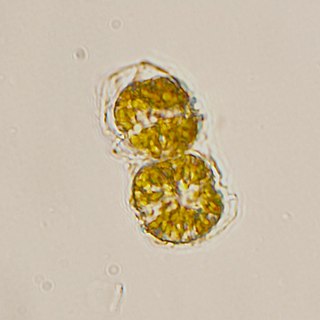
Shellfish is a colloquial and fisheries term for exoskeleton-bearing aquatic invertebrates used as food, including various species of molluscs, crustaceans, and echinoderms. Although most kinds of shellfish are harvested from saltwater environments, some are found in freshwater. In addition, a few species of land crabs are eaten, for example Cardisoma guanhumi in the Caribbean. Shellfish are among the most common food allergens.

Mussel is the common name used for members of several families of bivalve molluscs, from saltwater and freshwater habitats. These groups have in common a shell whose outline is elongated and asymmetrical compared with other edible clams, which are often more or less rounded or oval.

Saxitoxin (STX) is a potent neurotoxin and the best-known paralytic shellfish toxin. Ingestion of saxitoxin by humans, usually by consumption of shellfish contaminated by toxic algal blooms, is responsible for the illness known as paralytic shellfish poisoning (PSP).

Paralytic shellfish poisoning (PSP) is one of the four recognized syndromes of shellfish poisoning, which share some common features and are primarily associated with bivalve mollusks. These shellfish are filter feeders and accumulate neurotoxins, chiefly saxitoxin, produced by microscopic algae, such as dinoflagellates, diatoms, and cyanobacteria. Dinoflagellates of the genus Alexandrium are the most numerous and widespread saxitoxin producers and are responsible for PSP blooms in subarctic, temperate, and tropical locations. The majority of toxic blooms have been caused by the morphospecies Alexandrium catenella, Alexandrium tamarense, Gonyaulax catenella and Alexandrium fundyense, which together comprise the A. tamarense species complex. In Asia, PSP is mostly associated with the occurrence of the species Pyrodinium bahamense.

The hard clam, also known as the round clam, hard-shellclam, or the quahog, is an edible marine bivalve mollusk that is native to the eastern shores of North America and Central America from Prince Edward Island to the Yucatán Peninsula. It is one of many unrelated edible bivalves that in the United States are frequently referred to simply as clams. Older literature sources may use the systematic name Venus mercenaria; this species is in the family Veneridae, the venus clams.

Callista chione, the smooth clam, is a rather large, temperate, marine, bivalve mollusc that inhabits sandy bottoms or with small pebbles in clean waters down to about 200 m from the British Isles to the Mediterranean. The shell can reach up to about 110 mm Ø, its outer side is smooth and ranges from light greenish creamy colour to medium brown, probably varies to match the background; the interior is white to soft pink. The concentric and radial growth lines are easily seen. Callista chione is edible, different dishes are prepared throughout the Mediterranean in Spain, Italy, France, the Balkan and the Maghreb countries.
Shellfish poisoning includes four syndromes that share some common features and are primarily associated with bivalve molluscs As filter feeders, these shellfish may accumulate toxins produced by microscopic algae, such as cyanobacteria, diatoms and dinoflagellates.

Neurotoxic shellfish poisoning (NSP) is caused by the consumption of brevetoxins, which are marine toxins produced by the dinoflagellate Karenia brevis. These toxins can produce a series of gastrointestinal and neurological effects. Outbreaks of NSP commonly take place following harmful algal bloom (HAB) events, commonly referred to as "Florida red tide". Algal blooms are a naturally-occurring phenomenon, however their frequency has been increasing in recent decades at least in-part due to human activities, climate changes, and the eutrophication of marine waters. HABs have been occurring for all of documented history, evidenced by the Native Americans' understanding of the dangers of shellfish consumption during periods of marine bioluminescence. Blooms have been noted to occur as far north as North Carolina and are commonly seen alongside the widespread death of fish and sea birds. In addition to the effects on human health, the economic impact of HAB-associated shellfish toxin outbreaks can have significant economic implications as well due to not only the associated healthcare costs, but the adverse impact on the commercial shellfish industry.
Alexandrium fundyense is a species of dinoflagellates. It produces toxins that induce paralytic shellfish poisoning (PSP), and is a common cause of red tide. A. fundyense regularly forms massive blooms along the northeastern coasts of the United States and Canada, resulting in enormous economic losses and public health concerns.
Alexandrium tamarense is a species of dinoflagellates known to produce saxitoxin, a neurotoxin which causes the human illness clinically known as paralytic shellfish poisoning (PSP). Multiple species of phytoplankton are known to produce saxitoxin, including at least 10 other species from the genus Alexandrium.
Saxidomus, common name the "Washington clams", is a genus of large edible saltwater clams, marine bivalve mollusks in the family Veneridae, the Venus clams.

Yessotoxins are a group of lipophilic, sulfur bearing polyether toxins that are related to ciguatoxins. They are produced by a variety of dinoflagellates, most notably Lingulodinium polyedrum and Gonyaulax spinifera.

Zosimus aeneus, also known as the devil crab, toxic reef crab, and devil reef crab is a species of crab that lives on coral reefs in the Indo-Pacific from East Africa to Hawaii. It grows to a size of 60 mm × 90 mm and has distinctive patterns of brownish blotches on a paler background. It is potentially lethal due to the presence of the neurotoxins tetrodotoxin and saxitoxin in its flesh and shell.

Neosaxitoxin (NSTX) is included, as other saxitoxin-analogs, in a broad group of natural neurotoxic alkaloids, commonly known as the paralytic shellfish toxins (PSTs). The parent compound of PSTs, saxitoxin (STX), is a tricyclic perhydropurine alkaloid, which can be substituted at various positions, leading to more than 30 naturally occurring STX analogues. All of them are related imidazoline guanidinium derivatives.

Saxidomus gigantea is a large, edible saltwater clam, a marine bivalve mollusk in the family Veneridae, the venus clams. It can be found along the western coast of North America, ranging from the Aleutian Islands to San Francisco Bay. Common names for this clam include butter clam, Washington clam, smooth Washington clam and money shell.

Alexandrium catenella is a species of dinoflagellates. It is among the group of Alexandrium species that produce toxins that cause paralytic shellfish poisoning, and is a cause of red tide. Alexandrium catenella is observed in cold, coastal waters, generally at temperate latitudes. These organisms have been found in the west coast of North America, Japan, Australia, and parts of South Africa.
Dinotoxins are a group of toxins which are produced by flagellate, aquatic, unicellular protists called dinoflagellates. Dinotoxin was coined by Hardy and Wallace in 2012 as a general term for the variety of toxins produced by dinoflagellates. Dinoflagellates are an enormous group of marine life, with much diversity. With great diversity comes many different toxins, however, there are a few toxins that multiple species have in common.

Gonyautoxins (GTX) are a few similar toxic molecules that are naturally produced by algae. They are part of the group of saxitoxins, a large group of neurotoxins along with a molecule that is also referred to as saxitoxin (STX), neosaxitoxin (NSTX) and decarbamoylsaxitoxin (dcSTX). Currently eight molecules are assigned to the group of gonyautoxins, known as gonyautoxin 1 (GTX-1) to gonyautoxin 8 (GTX-8). Ingestion of gonyautoxins through consumption of mollusks contaminated by toxic algae can cause a human illness called paralytic shellfish poisoning (PSP).

Decarbamoylsaxitoxin, abbreviated as dcSTX, is a neurotoxin which is naturally produced in dinoflagellate. DcSTX is one of the many analogues of saxitoxin (STX).

Megapitaria squalida, the chocolate clam, is a species of bivalve mollusc in the family Veneridae. It was first described to science by George Brettingham Sowerby, a British conchologist, in 1835. The type specimen was collected by Hugh Cuming.
















